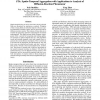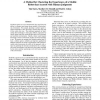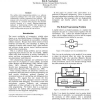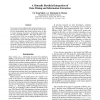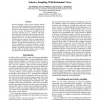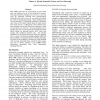AAAI
2000
14 years 4 months ago
2000
Spatio-temporal data sets arise when time-varying physical fields are discretized for simulation or analysis. Examples of time-varying fields are isothermal regions in the sea or ...
AAAI
2000
14 years 4 months ago
2000
If robotic agents are to act autonomously they must have the ability to construct and reason about models of their physical environment. For example, planning to achieve goals req...
AAAI
2000
14 years 4 months ago
2000
Researchers in the ontology-design field have developed the content for ontologies in many domain areas. Recently, ontologies have become increasingly common on the WorldWide Web ...
AAAI
2000
14 years 4 months ago
2000
The goal of most agents is not just to reach a goal state, but rather also (or alternatively) to put restrictions on its trajectory, in terms of states it must avoid and goals tha...
AAAI
2000
14 years 4 months ago
2000
The mobile robot programming problem is a software engineering challenge that is not easily conquered using contemporary software engineering best practices. We propose robot obse...
AAAI
2000
14 years 4 months ago
2000
In this paper, we present an active audition system for humanoid robot "SIG the humanoid". The audition system of the highly intelligent humanoid requires localization o...
AAAI
2000
14 years 4 months ago
2000
Text mining concerns applying data mining techniques to unstructured text. Information extraction (IE) is a form of shallow text understanding that locates specific pieces of data...
AAAI
2000
14 years 4 months ago
2000
Selective sampling, a form of active learning, reduces the cost of labeling training data by asking only for the labels of the most informative unlabeled examples. We introduce a ...
AAAI
2000
14 years 4 months ago
2000
Graphplan and heuristic state space planners such as HSP-R and UNPOP are currently two of the most effective approaches for solving classical planning problems. These approaches h...
AAAI
2000
14 years 4 months ago
2000
Most CBR systems rely on a fixed library of cases, where each case consists of a set of facts specified in advance. This paper describes techniques for dynamically extracting case...
